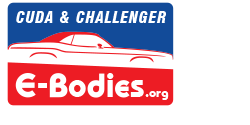- Welcome to E-Bodies.org Cuda Challenger Forum.
Front spindle differences
Started by gzig5, January 30, 2025, 02:44:43 PM
Previous topic Next topic0 Members and 1 Guest are viewing this topic.
Tags:
User actions

|
Drum Spindle Casting #s Front 70-71Started by moparcar on Wheels, Tires, Brakes, Suspension & Steering |
1 Replies
742 Views |
Last post: June 22, 2020, 07:55:30 PM by anlauto |

|
Front Inner Wheel Bearings and Seals - Large SpindleStarted by Floyd on Parts / Misc For Sale |
0 Replies
391 Views |
Last post: October 01, 2024, 10:02:27 AM by Floyd |

|
Front bumperette differencesStarted by 70 Challenger Lover on Body Shop |
17 Replies
2006 Views |
Last post: February 20, 2019, 09:06:30 PM by 70 Challenger Lover |

|
Correct Spindle WasherStarted by moonshine_mike on Cuda & Challenger General Discussion (ROSEVILLE MOPARTS) |
3 Replies
408 Views |
Last post: August 03, 2025, 09:06:54 AM by moonshine_mike |

|
RH Disc Brake Spindle 72.Started by GoMangoBoys on Parts / Misc For Sale |
0 Replies
690 Views |
Last post: August 22, 2020, 07:57:00 AM by GoMangoBoys |


